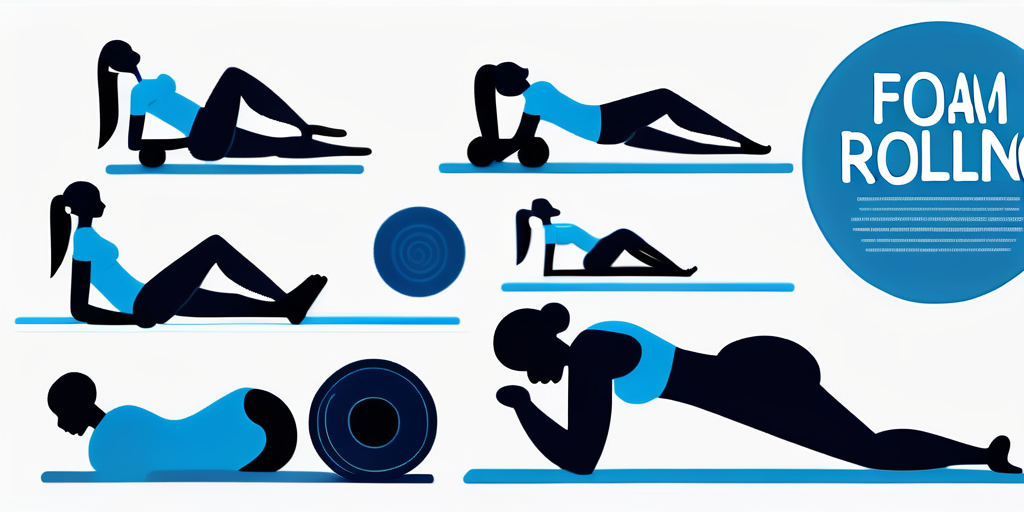In the world of fitness and health, a term has been gaining popularity lately – fascial adhesions. These adhesions, also known as fascial restrictions, are like stubborn knots that can affect the function and flexibility of your muscles and tissues. They can lead to pain, discomfort, and limited range of motion. But fear not, because in this article, we will explore various techniques and methods to release fascial adhesions and improve your overall well-being.
Foam Rolling Techniques
If you’re looking for a self-massage technique targeting those pesky fascial adhesions, foam rolling might be the answer you’ve been searching for. This simple yet effective technique involves using a foam roller to apply pressure to different areas of your body. It helps to break up adhesions and knots in the fascia, promoting blood flow and enhancing tissue mobility.

When using a foam roller, find a flat surface and position yourself on top of it. Begin rolling slowly and gently, targeting specific muscle groups. If you encounter a tight or tender spot, pause and apply more pressure. Take deep breaths and allow the tension to dissipate as you roll back and forth. Avoid rolling over joints or bones; always listen to your body’s feedback.
Another variation of foam rolling is using a specialized massage ball or lacrosse ball to target smaller areas, such as your feet or shoulders. By applying controlled pressure to these tight spots, you can release fascial adhesions and enjoy improved movement and flexibility.
Did you know that foam rolling can also positively impact your mental well-being? As you engage in this self-massage technique, you physically release tension and create a space for mindfulness and relaxation. Rhythmically rolling back and forth can help calm your mind and reduce stress. So, the next time you roll out your foam roller, take a moment to focus on your breath and let go of any mental clutter.
Let’s discuss implementing a rolling sequence in your foam rolling routine. By following a specific sequence, you can maximize the benefits of this technique and target different areas of your body more effectively. Start by warming up your muscles with dynamic stretches or light movements. This increases blood flow and prepares your muscles for the upcoming foam rolling session.
Next, choose a specific area you want to focus on, such as your calves or lower back. Begin by rolling slowly back and forth over that area for about 1-2 minutes. Pay attention to tight or tender spots and spend a little extra time on those areas. Switch to a different body part and repeat the process as you continue your rolling sequence.
You can effectively release fascial adhesions throughout your body by systematically addressing each area. This approach ensures that no muscle group is left behind, allowing you to experience the full benefits of foam rolling. So, take the time to create a rolling sequence that works for you and make it a regular part of your self-care routine.
Myofascial Release Methods
Myofascial release techniques are another effective way to release fascial adhesions and promote a healthy fascial network. Unlike foam rolling, myofascial release involves more focused and targeted pressure on specific trigger points.
One popular method of myofascial release is using a foam roller with grooves or ridges. This can help to target smaller areas and apply more precise pressure to release tight fascial adhesions. You can also use specialized tools like massage sticks or balls with various textures to reach deeper layers of fascia and break up stubborn adhesions.
Another myofascial release method that is gaining traction is using FasciaBlasting devices. These tools utilize vibration and pressure to directly target fascial adhesions, helping to improve blood flow and restore healthy tissue function. When using any of these methods, you must approach them patiently and gradually increase the intensity as your body adapts.
For individuals seeking a more hands-on approach to myofascial release, manual therapy techniques such as deep tissue massage or myofascial release therapy can be highly beneficial. These techniques involve a skilled practitioner applying targeted pressure to specific areas of fascial restriction, helping to break up adhesions and restore optimal tissue mobility.
Additionally, stretching exercises in your myofascial release routine can enhance the benefits of releasing fascial adhesions. Dynamic stretches that target the fascia, such as yoga or Pilates movements, can help to improve flexibility and reduce tension in the fascial network, complementing the effects of myofascial release techniques.
Trigger Points Release
Understanding trigger points in your body can significantly aid in releasing fascial adhesions. Trigger points are hyperirritable spots within a muscle that can cause referred pain or discomfort. By locating these trigger points, you can apply targeted pressure to encourage the release and relaxation of the surrounding fascia. This can be done with your hands, using gentle but firm pressure on the specific point for several seconds.
Heat Therapy for Fascial Release
Heat therapy has long been recognized for relaxing muscles and reducing pain. It can also be beneficial in releasing fascial adhesions. Applying heat to areas affected by adhesions can help increase blood flow, relax tight tissues, and promote healing.
You can use various methods to apply heat therapy to your body. Hot packs, heating pads, warm baths, or even a warm towel can all be effective tools. Apply the heat to the area for 15-20 minutes, allowing the muscles and fascia to relax and release tension. Combine heat therapy with gentle stretching for an even greater effect in releasing fascial adhesions.
Heat therapy works by dilating blood vessels and increasing the flow of oxygen and nutrients to the affected area. This increased circulation helps to speed up the body’s natural healing process, reducing pain and stiffness. Additionally, the warmth from the heat source can help to soothe muscle spasms and improve flexibility.
Precautions
While heat therapy can relieve and aid in releasing fascial adhesions, taking necessary precautions is essential. Avoid applying excessive heat or directly using heat therapy on inflamed or injured areas. Always test the temperature of the heat source to prevent burns or discomfort. It’s recommended to seek professional advice if you have any concerns or pre-existing conditions before using heat therapy for fascial release.
Stretching Exercises to Improve Flexibility
Stretching is crucial for improving flexibility and plays a significant role in releasing fascial adhesions. By incorporating certain types of stretches into your routine, you can target and release tension in your fascia.

Dynamic stretching exercises, where you move through a range of motion, can help warm up your muscles and fascia. This type of stretching is great to incorporate into your pre-workout routine. Examples include arm circles, walking lunges, or leg swings, helping to engage your fascia and prepare it for movement.
Static stretching exercises involve holding specific positions for an extended period, allowing your muscles and fascia to relax and elongate gradually. You can target particular muscle groups or areas affected by adhesions, such as the hamstrings or shoulders. Remember to breathe deeply and relax into each stretch, avoiding sudden or extreme movements.
Additionally, proprioceptive neuromuscular facilitation (PNF) stretching is a highly effective technique to improve flexibility. PNF stretching involves a combination of stretching and contracting of the muscle group being targeted. This method helps to relax the muscles and increase their length, promoting greater flexibility. An example of PNF stretching is the contract-relax technique, where you contract the muscle being stretched for a few seconds before relaxing and moving deeper into the stretch.
Listen to your body when performing stretching exercises. Pay attention to any discomfort or pain, as stretching should never be painful. Gradually increase the intensity and duration of your stretches over time to see improvements in your flexibility and range of motion. Consistency is key to reaping the benefits of stretching, so aim to incorporate these exercises into your daily routine for optimal results.
Importance of Hydration for Healthy Fascia
When it comes to releasing fascial adhesions, one often overlooked aspect is hydration. Staying properly hydrated is essential for the health and function of your fascia. Fascia comprises collagen, a protein that requires adequate hydration to maintain its elasticity and provide optimal support to your muscles and tissues.

Dehydration can decrease flexibility and elasticity in your fascia, making it more prone to adhesions and restrictions. Ensure you drink enough water throughout the day to stay hydrated. Incorporating hydrating foods such as fruits and vegetables into your diet can further support healthy fascia.
Hydration plays a vital role in the overall health of your fascia. Adequate water intake helps transport nutrients to the fascia, aiding in repair and maintenance processes. It also assists in removing waste and toxins from the fascial tissues, promoting a clean and healthy environment for optimal function.
Furthermore, maintaining proper hydration levels can improve your fascia’s flexibility and resilience. Well-hydrated fascia is more supple and responsive, allowing for better movement and reduced risk of injuries. This is especially important for athletes and individuals engaged in physical activities that strain the fascia.
In conclusion, releasing fascial adhesions is crucial for maintaining optimal muscle function, flexibility, and overall well-being. By incorporating foam rolling techniques, myofascial release methods, heat therapy, and stretching exercises into your routine, you can effectively target and release fascial adhesions, improving your body’s movement and restoring balance.
Listen to your body, seek professional advice, and stay hydrated to support healthy fascia. Embrace these techniques and unlock the potential of a pain-free and mobile body.


